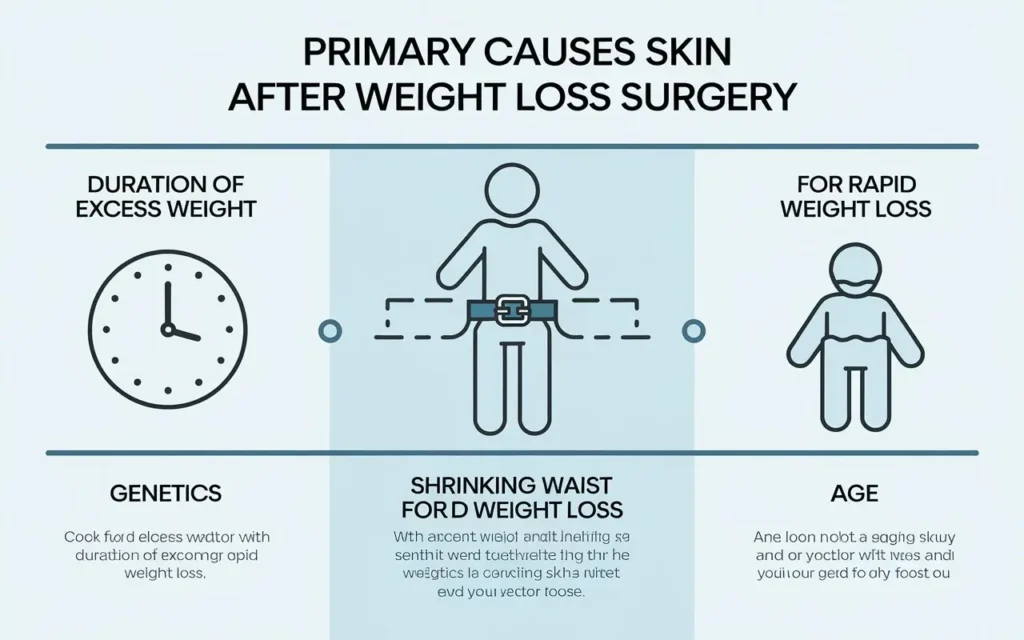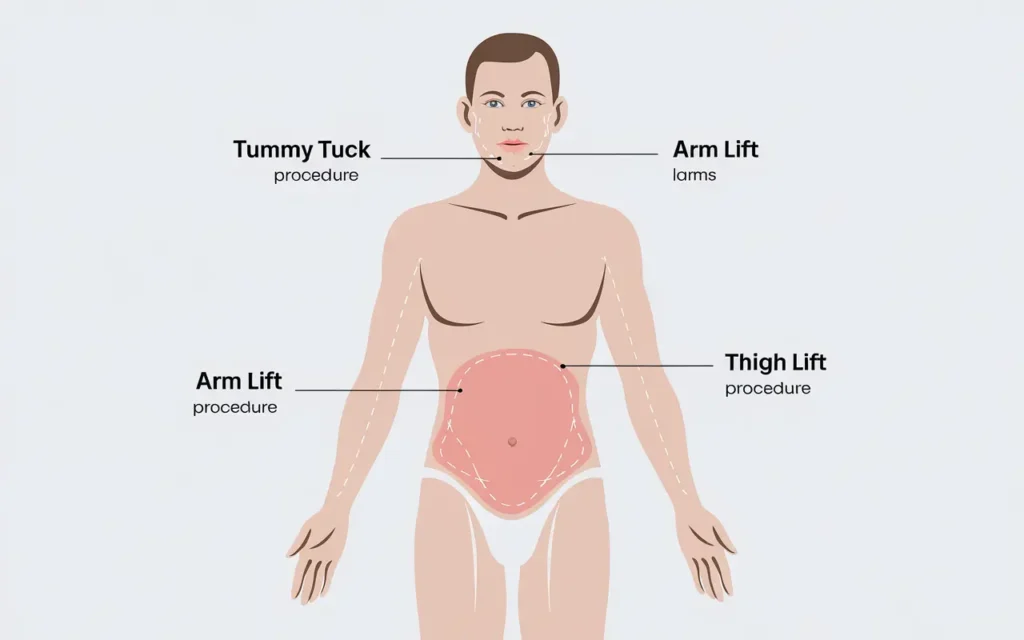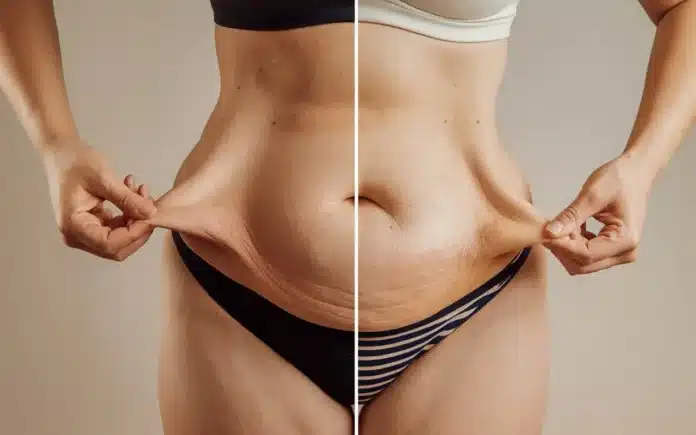Managing Loose Skin After Weight Loss Surgery: Comprehensive Guide
Table of Contents
- Understanding Loose Skin After Weight Loss Surgery
- Causes of Loose Skin After Weight Loss Surgery
- Non-Surgical Treatments for Loose Skin After Weight Loss Surgery
- Surgical Options for Excess Skin Removal
- Lifestyle Changes to Minimize Loose Skin
- The Psychological Impact of Loose Skin
- Preventing Loose Skin: Tips Before and After Surgery
- Nutrition’s Role in Skin Elasticity
- Exercise Regimens to Tighten Loose Skin
- Innovative Technologies for Managing Loose Skin
1. Understanding Loose Skin After Weight Loss Surgery
Loose skin after weight loss surgery is a common concern for many individuals who have undergone significant weight loss. This section delves into what loose skin entails, why it occurs, and the overall impact it can have on a person’s life.
What is Loose Skin?
Loose skin refers to excess, sagging skin that remains after the body has shed a substantial amount of weight. This excess skin can affect various parts of the body, including the abdomen, arms, thighs, and face.
Impact on Daily Life
Having loose skin after weight loss surgery can affect both physical comfort and emotional well-being. It may lead to discomfort during physical activities and can impact self-esteem and body image.
2. Causes of Loose Skin After Weight Loss Surgery

Loose skin after weight loss surgery is primarily caused by the rapid reduction of body fat, which doesn’t allow the skin enough time to contract naturally. Several factors contribute to the extent of loose skin.
Rapid Weight Loss
Significant and swift weight loss, often achieved through bariatric surgery, doesn’t give the skin sufficient time to adjust, leading to sagging and excess skin.
Age and Genetics
Age plays a crucial role as skin loses its elasticity over time. Genetics also determine how well one’s skin can bounce back after weight loss.
Duration of Overweight
The longer the skin has been stretched due to excess weight, the less likely it is to retract fully after weight loss.
3. Non-Surgical Treatments for Loose Skin After Weight Loss Surgery

Loose skin after weight loss surgery can often be managed with non-surgical treatments. These options are less invasive and can help improve skin elasticity and appearance.
Top Non-Surgical Treatments
- Radiofrequency Therapy: Uses energy to heat the skin, promoting collagen production and skin tightening.
- Ultrasound Treatments: High-intensity focused ultrasound (HIFU) penetrates deep layers to stimulate collagen.
- Skincare Routines: Regular moisturizing and the use of products containing retinoids can enhance skin elasticity.
Benefits of Non-Surgical Options
Non-surgical treatments typically involve minimal downtime, lower costs, and reduced risk compared to surgical procedures. They can be effective in improving mild to moderate cases of loose skin.
4. Surgical Options for Excess Skin Removal

Loose skin after weight loss surgery often leads individuals to consider surgical options for excess skin removal. Surgery can provide more dramatic and lasting results.
Common Surgical Procedures
- Belly Tuck (Abdominoplasty): Removes excess skin and tightens the abdominal muscles.
- Arm Lift (Brachioplasty): Eliminates sagging skin from the upper arms.
- Thigh Lift: Removes excess skin from the thighs to create a smoother contour.
- Body Lift: Comprehensive procedure that addresses multiple areas of excess skin.
Benefits and Risks
Surgical options can significantly enhance body contours and improve self-esteem. However, they come with risks such as infection, scarring, and the need for adequate recovery time.
5. Lifestyle Changes to Minimize Loose Skin

Loose skin after weight loss surgery can be minimized with certain lifestyle adjustments. These changes focus on enhancing skin elasticity and overall health.
Diet and Nutrition
Consuming a balanced diet rich in vitamins and minerals supports skin health. Protein intake is particularly important for collagen production.
Hydration
Staying well-hydrated helps maintain skin elasticity and overall health. Aim for at least eight glasses of water daily.
Exercise
Incorporating strength training and resistance exercises builds muscle mass, which can help fill out loose skin and improve body contours.
6. The Psychological Impact of Loose Skin
Loose skin after weight loss surgery can have significant psychological effects. Addressing the emotional and mental aspects is crucial for overall well-being.
Body Image and Self-Esteem
Excess skin can lead to feelings of self-consciousness and impact one’s body image and self-esteem. It’s important to address these feelings through support and counseling.
Seeking Support
Joining support groups or speaking with a mental health professional can help individuals cope with the emotional challenges associated with loose skin.
7. Preventing Loose Skin: Tips Before and After Surgery
Loose skin after weight loss surgery can sometimes be prevented or minimized with proactive measures taken before and after the procedure.
Pre-Surgery Preparation
- Gradual Weight Loss: Slowing down weight loss before surgery can help skin adjust better.
- Strength Training: Building muscle mass pre-surgery can provide a better foundation for skin elasticity.
Post-Surgery Strategies
- Consistent Exercise: Maintaining an active lifestyle helps support skin tightening.
- Proper Skincare: Using moisturizers and protective skincare products aids in maintaining skin health.
8. Nutrition’s Role in Skin Elasticity
Loose skin after weight loss surgery can be significantly influenced by proper nutrition. A nutrient-rich diet supports skin health and elasticity.
Essential Nutrients for Skin Health
| Nutrient | Role in Skin Elasticity | Sources |
|---|---|---|
| Vitamin C | Collagen production and skin repair | Citrus fruits, strawberries, bell peppers |
| Protein | Supports skin structure and repair | Lean meats, beans, legumes |
| Vitamin E | Protects skin from oxidative stress | Nuts, seeds, spinach |
| Omega-3 Fatty Acids | Maintains skin moisture and elasticity | Fish, flaxseeds, walnuts |
Sample Nutrient-Rich Meal Plan
- Breakfast: Greek yogurt with berries and chia seeds.
- Lunch: Grilled chicken salad with mixed vegetables and olive oil dressing.
- Dinner: Baked salmon with quinoa and steamed broccoli.
- Snacks: Almonds, carrot sticks with hummus.
9. Exercise Regimens to Tighten Loose Skin

Loose skin after weight loss surgery can be effectively managed with targeted exercise regimens. Building muscle mass and enhancing overall fitness play a key role.
Strength Training
Incorporating strength training exercises helps build muscle, which can fill out loose skin and improve body contours.
Cardiovascular Exercises
Cardio activities like running, cycling, and swimming enhance overall fitness and support weight maintenance, indirectly aiding in skin tightening.
Flexibility and Stretching
Regular stretching and flexibility exercises maintain muscle tone and skin elasticity, contributing to a smoother appearance.
Sample Workout Plan
| Day | Exercise | Duration |
|---|---|---|
| Monday | Strength Training (Upper Body) | 45 minutes |
| Wednesday | Cardio (Cycling) | 30 minutes |
| Friday | Strength Training (Lower Body) | 45 minutes |
| Saturday | Yoga and Stretching | 60 minutes |
10. Innovative Technologies for Managing Loose Skin
Loose skin after weight loss surgery can be addressed with the latest technological advancements. These innovative treatments offer new avenues for skin tightening and improvement.
Laser Therapies
Laser treatments use focused light to stimulate collagen production, leading to tighter and more elastic skin over time.
Cryolipolysis
Also known as “fat freezing,” this technology targets and reduces fat cells, indirectly supporting skin tightening.
High-Intensity Focused Ultrasound (HIFU)
HIFU delivers concentrated ultrasound energy to deep layers of the skin, promoting collagen synthesis and skin tightening.
Microneedling
Microneedling involves tiny needles creating micro-injuries in the skin, stimulating the body’s natural healing process and enhancing skin elasticity.
Conclusion
Loose skin after weight loss surgery is a multifaceted issue that can be managed through a combination of surgical and non-surgical treatments, lifestyle changes, proper nutrition, and exercise. Understanding the causes and available solutions can empower individuals to make informed decisions and achieve the best possible outcomes post-surgery.
References and Further Reading
- Mayo Clinic: Bariatric Surgery
- WebMD: What is Bariatric Surgery?
- National Institutes of Health: Excess Skin After Weight Loss
- Healthline: How to Deal With Excess Skin After Weight Loss




